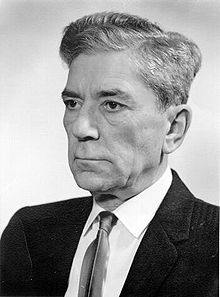|
Zoltán Lajos Bay
 Zoltán Lajos Bay (July 24, 1900 in Gyulavári – October 4, 1992 in Washington, D.C.)[1] was a Hungarian physicist, professor, and engineer who developed technologies, including tungsten lamps and microwave devices. He was the leader of the second group to observe radar echoes from the Moon (Moonbounce). From 1930, he worked at the University of Szeged as a professor of theoretical physics.  In 1923 at Tungsram Ltd., a research laboratory was established for improving light sources, mainly electric bulbs.[1] The head of that laboratory was Ignác Pfeifer, whose research staff included Zoltán Bay, along with Tivadar Millner, Imre Bródy, György Szigeti, Ernő Winter, and many others.[1] György Szigeti worked together with Zoltán Bay on metal-vapor lamps and fluorescent light sources. They received a U.S. patent on "Electroluminescent light sources" which were made of silicon carbide; these light sources were the ancestors of light-emitting diodes (LEDs).[1] In 1955, Zoltán Bay became head of the Department of Nuclear Physics in the National Bureau of Standards (NBS, called today NIST), where he measured the velocity and frequency of light by a previously unknown measurement method.[2][failed verification] As a result of Bay's research, the 1983 conference of the International Weights and Measures Bureau accepted, as a standard, the definition of a meter (metre)[3] as recommended by Zoltán Bay. In 1998, the State of Israel recognized him as among the Righteous Among the Nations and listed his name at Yad Vashem as rescuer number 6497.[4][5] A relative with the same name invented Bay radial speaker:BayZ Notes
Further reading
External links
|
||||||||||||||||||||||

